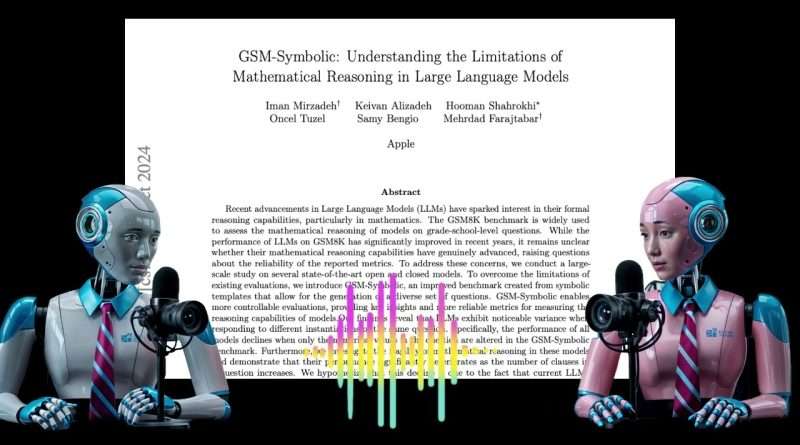Ep. 17: Apple's Newest AI Research Paper | GSM Symbolic | LLMs & Reasoning | Swetlana AI Podcast
So the other day Apple had published a paper called « GSM-Symbolic: Understanding the Limitations of Mathematical Reasoning in Large Language Models » (by Iman Mirzadeh, Keivan Alizadeh, Hooman Shahrokhi, Oncel Tuzel, Samy Bengio, Mehrdad Farajtabar).
That’s what we’re looking at in this podcast episode.
This research paper investigates the reasoning capabilities of large language models (LLMs) by evaluating their performance on mathematical word problems.
The researchers introduce a new benchmark called GSM-Symbolic, which generates diverse question variants using symbolic templates, to overcome the limitations of existing evaluations.
Their findings reveal that LLMs exhibit significant performance variations when responding to different instantiations of the same question, suggesting that their mathematical reasoning abilities are fragile and may not be based on true logical reasoning.
The paper highlights the need for more reliable evaluation methodologies and further research into the reasoning capabilities of LLMs.
***
Here are the strengths and weaknesses of large language models (LLMs) when it comes to performing mathematical reasoning, based on the provided source:
Strengths and Weaknesses of LLMs in Mathematical Reasoning
● LLMs have shown remarkable capabilities in various domains, including question answering, creative tasks, coding, and mathematics.
● The ability of LLMs to effectively perform mathematical reasoning tasks is key to advancing artificial intelligence and its real-world applications.
● The GSM8K (Grade School Math 8K) dataset has emerged as a popular benchmark for evaluating the mathematical reasoning capabilities of LLMs. This dataset includes simple math questions with detailed solutions, which makes it suitable for Chain-of-Thought (CoT) prompting.
However, there are some limitations:
● The question of whether current LLMs are genuinely capable of true logical reasoning remains an important research focus.
● The reasoning process in LLMs is probabilistic pattern-matching rather than formal reasoning. Although LLMs can match more abstract reasoning patterns, they fall short of true logical reasoning.
● The popularity and prevalence of GSM8K increase the risk of inadvertent data contamination. The performance of LLMs can be viewed as a distribution with unwarranted variance across different instantiations of the same question.
● The static nature of GSM8K does not allow for controllable experiments to understand model limitations.
● Small changes in input tokens can drastically alter model outputs, indicating a strong token bias and suggesting that these models are highly sensitive and fragile.
● In tasks requiring the correct selection of multiple tokens, the probability of arriving at an accurate answer decreases exponentially with the number of tokens or steps involved, underscoring their inherent unreliability in complex reasoning scenarios.
● LLMs struggle with increased complexity. As the number of clauses in a question increases, average performance drops, and the variance in performance increases consistently across all models.
● Adding seemingly relevant but ultimately irrelevant information to problems causes substantial performance drops (up to 65%) across all state-of-the-art models. This reveals a critical flaw in the models’ ability to discern relevant information for problem-solving.
● LLMs struggle even when provided with multiple examples of the same question or examples containing similar irrelevant information. This suggests deeper issues in their reasoning processes that cannot be alleviated by in-context shots and need further investigation.
Overall, while LLMs have demonstrated some potential in mathematical reasoning, their reliance on pattern matching rather than genuine logical reasoning poses a significant limitation. Further research is needed to develop more robust and reliable LLM-based systems for mathematical problem-solving.
Views : 65
GSM
Source by Swetlana AI | Podcast




